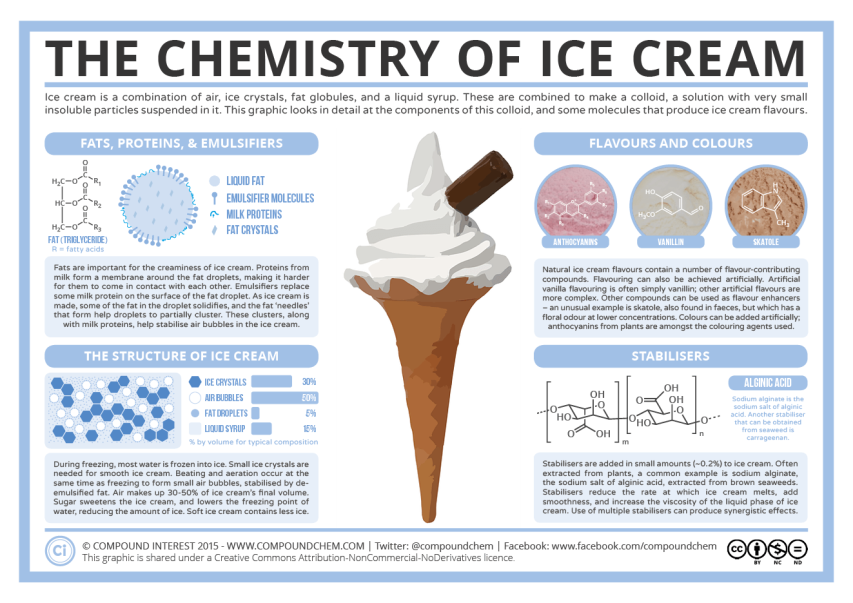Compound Interest on the chemical structure of ice cream:
Ice cream is a mainstay of summer – for many, a trip to the beach would be incomplete without one. Despite its seeming simplicity, ice cream is a prime example of some fairly complex chemistry. This graphic takes a look at some of the ingredients that go into ice cream, and the important role they play in creating the finished product. There’s a lot to talk about – whilst the graphic gives an overview, read on for some in-depth ice cream science!
Initially, it might be hard to believe that ice cream could be all that complicated. After all, it’s essentially composed of three basic ingredients: milk, cream, and sugar. How complex can the mixing of three ingredients really be? As it turns out, the answer is: very! Simply mixing the ingredients together, then freezing them, isn’t enough to make a good ice cream. To understand why this is, we’re going to need to talk about each of the component ingredients in turn, and what they bring to the table.
Ice cream is a type of emulsion, a combination of fat and water that usually wouldn’t mix together without separating. However, in an emulsion, the very small droplets of fat are dispersed through the water, avoiding this separation. The manner in which this is accomplished is a result of the chemical properties of molecules in the emulsion.
The fat droplets in ice cream come from the cream used to make it. Fats are largely composed of a class of molecules called triglycerides, with very small amounts (less than 2%) of other molecules such as phospholipids and diglycerides. The triglycerides are made up of a glycerol molecule combined with three fatty acid molecules, as shown in the graphic. The melting temperature of the fats used in ice cream is quite important, as fats that melt at temperatures that are too high give a waxy feel in the mouth, whilst it’s difficult to make stable ice cream with those that melt at too low a temperature. Luckily, dairy fat falls just in the right range! As it happens, you can also make ice cream with palm oil and coconut oil, as their melting temperatures are similar.




